I sometimes wonder if Berry Gordy really believed in H-D-H's song "This Old Heart Of Mine" as it didn't seem to get any special treatment when penned. That seems strange as the song turned out to be one of the trio's most recorded songs. The backing track for the song was first cut (in September 65) and was intended for Kim Weston's use. But Kim & Mickey Stevenson were exploring their options away from Motown at that time, so she never got to cut a version (Tammi Terrell cut a solo female version but this languished in the vaults for a while). After the Isley's were signed to Motown in Nov 65, the song was assigned to them & they almost immediately added their vocals to the existing track (on 1st Dec 65) and it was soon released on a 45 (Tamla 54128 on 28th Jan 66). But it didn't seem to get much of a push from Motown. The company hardly took any promo photos of the group, so they can't really have planned big things for them. Anyway, promo copies of the 45 must have been sent out in mid January 66 & it was soon getting plays on Windsor & Michigan radio stations. It started to enter local radio stn charts in late Jan / early Feb 66 and then spread out across the US. But it seemed to break slowly in many US areas and was getting almost as many pop stn plays as R&B stn plays (probably due to the Isley's past hits).
It progressed from radio plays / charts to sales chart status but not that rapidly. By early April it was in the US R&B national chart top 10's and was also climbing the Hot 100 where it had just made the top 20. After 9 weeks on that chart it reached #15 (mid April) but it was dropping down their R&B chart that same week (from #6 to #8). As it had been a bit of a slow starter in the US, it didn't gain a UK release till the end of March but it then became a legendary release (TMG 555). Initially it just scrapped into the UK Top 50 pop chart (for 1 week; 30th April) but then continued to sell week after week. It was selling to soul / Motown fans who mainly bought from specialist shops, these not usually being chart return shops. But the sales people at such specialist shops stated that (after an initial flurry of sales in May) they would sell around 10 copies of the 45 every week. This situation went on for week after week and I guess resulted in EMI organising a 2nd press of the single late in 1966. The single kept selling copies, so unlike most other soul 45's, EMI never deleted it from their sales listings. Throughout 1967 it still kept selling. By now it was a firm disco favourite and as Motown track plays spread from mod / soul clubs to more mainstream venues (the Locarnos, Top Rank & Mecca ballrooms), none soul fans started to buy copies.
This situation continued into 1968 and after a full 72 weeks of continuing sales, EMI decided to re-promote the 45 and issued a new promo copy in Oct 68. This got the single new reviews in the British music press and led to plays on BBC Radio 1. In no time at all, it went to the top of the UK R&B chart and was soon back on the pop charts. It peaked on the pop chart in mid November 68. By 18th January 69 it had dropped to #27 but this was it's 12th week on the charts. 3 weeks later it had only dropped another 5 places to stand at #32. On that same chart, their follow up 45 (“I Guess I'll Always Love You”) stood just outside the top 10, and the success the other single was enjoying finally took the focus off TMG555. But it was still selling lots of copies over 30 months after it's first UK release. I don't believe EMI ever admitted how many copies it had sold during that two & a half year period (but I could be wrong). Other versions of the song were released here & sold well too (the Supremes, Donnie Elbert, Rod Stewart x 2, Bettye Swann, Delroy Wilson, Donny Beaumont, Wild Cherry, Vonda Shepard, Jackie Moore, Gee Morris, etc.) The Isley's version was put out further times too (1975 + 1976 & again by RCA in the 80's). By July 2019 it had attained UK Silver Disc status (250,000 sales) & it went Gold (1 million sales) in Nov 2022 (no doubt as a result of many downloads by younger fans).
But back in vinyl 45's heydays, I'd love to know just how many copes of this Tamla Motown 45 sold. The only people to really know would be the guys at EMI as so many copies of TMG555 would had been purchased in non chart return shops. Back then (1966 to 1968) UK charts were compiled from sales figures from between 30 and 100 record shops (when the Isley's 45 was mainly selling in quantity). Big record companies such as EMI got record shops to stock their 45's on a 'sale or return' basis. Unsold copies could be returned to EMI when the single was deleted and the shop would receive their money back. As TMG555 was never deleted (until the early 70's I guess), no copies of this single would have been eligible for this scheme. At the start of the 1960's, Record Retailer mag was just sampling sales in around 30 stores; NME and Melody Maker had a bigger sample size, more like 100 shops. In mid February 1969, Record Retailer with the BBC commissioned the BMRB to record sales of singles in what then officially became the UK Singles Chart.
The BMRB compiled their chart data from approximately 250 to 300 record stores. The 300 shops used each week being randomly chosen from a pool of approximately 6,000 shops. But the majority of the 300 shops who were asked to send in their weekly sales figures (some returns were delayed in the post, thus the 250 to 300 figure for data utilised each week)were large mainstream, High Street type shops. They weren't the specialist retail shops where soul fans would usually go to buy their vinyl fix (most big pop orientated record shops not automatically carring stock of obscure soul & Motown singles released here). These mainstream record shops were also mainly located in big cities, the highest number of them being in the London area (a fact that worked against NS reissues in the 70's as sales of such 45's were quite low in the London area compared to the rest of the country).
Singles in the UK were selling in unheard of volumes in the 1960's (thanks to the impetus the Beatles helped give to the record biz). Average sales figures for a 45 that reached #1 on the British pop chart were 750,000 copies. By the 70's, that had dropped to around 150,000 copies. By the mid 80's, a single could top the charts yet still only sell 50,000 copies. By 2006, a single could reach #1 by selling less than 18,000 copies. A single that only managed to attain a top 10 placing would have sold substantially less copies than the 45 that stood at #1 during those same weeks. Of course, some records caught the public's imagination and sold way more copies than was the norm for their period (the likes of Spice Girls, Oasis & New Order releases being examples of this). Oasis's “Wonderwall” single got a gold disc even though it never actually topped the charts. In the mid 70's, Queens “Bohemian Rhapsody” sold way above all other releases that year & it returned to the charts in 1991 when included in the film 'Waynes World'. In all, it's reckoned that this 45 sold in excess of 2.6 million copies in the UK.
In 1963/64 a new Beatles 45 would have advance sales that justified a 1st pressing run of 250,000 copies. “Their “She Loves You” 45 was released in late August 1963 but had managed over 1.3 million copies sold by the year end (a 4 month period). EMI's big wigs were just about all classical music guys and tended to look down on the companies pop material. This situation continued even after the Beatles records were accounting for over 20% of everything EMI were selling in the UK during the mid 1960's years. How out of touch EMI managers were before the Beatles came along is shown by the fact that Elvis Presley's initial 10 UK released singles were put out by EMI on their HMV label but they weren't promoted properly, so none of them sold in the same quantities that they had in the Us (4 of them made the UK top 10 though). The type of record buyer who's purchases were most reflected by high chart placings were your older M-O-R buyer. This fact is illustrated well by the top selling UK 45 most years during the 1960's. The Beatles had the top selling single in 1963 but the top seller each year after that came from Jim Reeves (64), Ken Dodd (65), Jim Reeves (66), Englebert Humpything (67), Louis Armstrong (68), the Archies (69) and Elvis Presley (70).
In addition to UK 45 sales, by 1969, British soul fans had started to buy lots of imported US 45's – from outlets such as the B&S shop and F L Moores. With sales of “This Old Heart Of Mine” being almost zero across the US by 1968 / early 1969, US Motown copies were turning up at discounted prices and these were also being bought in decent quantities over here. With only 100 of the 6000 UK record shops providing data on what were the best selling singles each week, it's easy to see that sales volumes of 45's such as “This Old Heart Of Mine” could easily be underestimated. In addition to this, most record company reps knew which the sales return shops were and so would send out teams to buy certain of their own releases in these shops to 'hype' them onto the charts. Once on the chart, much more radio exposure was guaranteed and therefore sales would then be boosted due to the additional prominence the record would then be receiving. So (IMO) most weeks, TMG 555's chart position would have been lower than the actual sales volume it had managed to achieve.
Even though UK Tamla Motown 45's were selling in greater quantities towards the end of the 1960's and into the 70's, very few (at the time) achieved sales volumes of 250,000 (silver disc qualitying numbers). T/Motown 45's that were big sellers here back in the day were a bit thin on the ground before the late 1960's. The only ones we know that achieved 250,000 sales back then being;
THE SUPREMES “Baby Love” ... end of 1964 / early 65;
FOUR TOPS “Reach Out I'll Be There” ... 1967;
MARVIN GAYE “Heard It Through The Grapevine” ... 1969;
STEVIE WONDER “Yester Me, Yester You, Yesterday” ... end of 69 / early 70.
Of course, the 45 at number 1 on the charts each week would have sold substantially more copies of the single standing at say #5. A #1 record would probably have sold as many copies in a week as the one that had peaked at #5 had managed to sell in a month. But of course, all the charts were actually doing was collating & illuminating the records that had been selling in less than 100 chart return shops (the larger sample of shops used by the BRMB chart not commencing till around the time the Isley's biggie had dropped of the chart).
In the very near future, original US released copies of this single will be 60 years old. It is still a much loved track with Motown fans all these years later, even though it will never be classed as anything close to being a rare record. In fact, I'd guess it must qualify as one of the most plentiful records to ever have escaped on the iconic British Tamla Motown label. It seems to be the only T/M 45 to appear as a promo copy in both red & white plus green & white versions. After 2006, downloads largely replaced actual vinyl copies of new singles. Even though there has now been a resurgence in vinyl sales, we will never return to the massive sale volumes of times past. It would be great however to finally find out just how many copies of the Isley's “This Old Heart Of Mine” single were pressed up in the UK down the years. My guess would be that it had reached the 250,000 singles sold landmark by the mid 1970's, but with a lot of these sales having been via small specialist shops, those sale volumes were never documented.





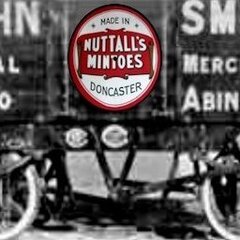
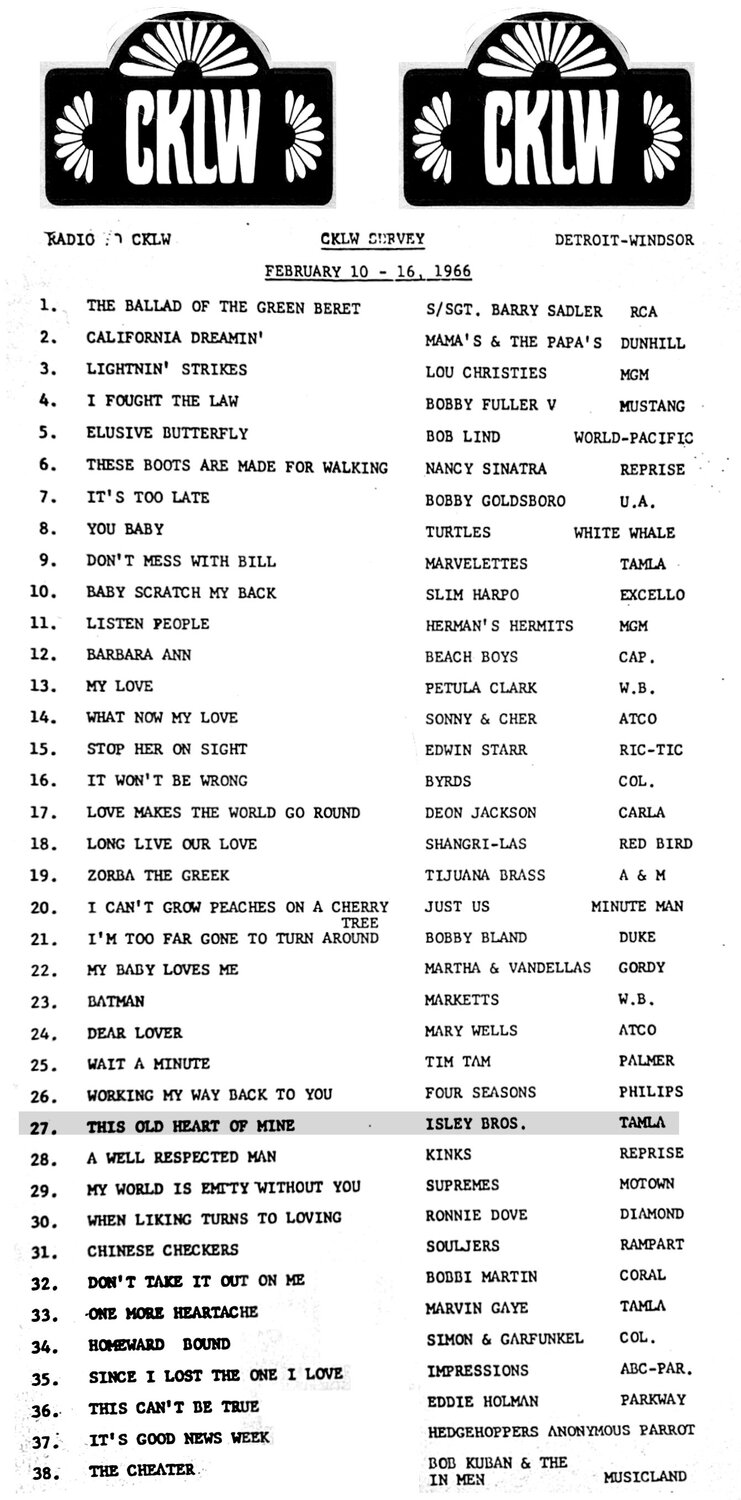
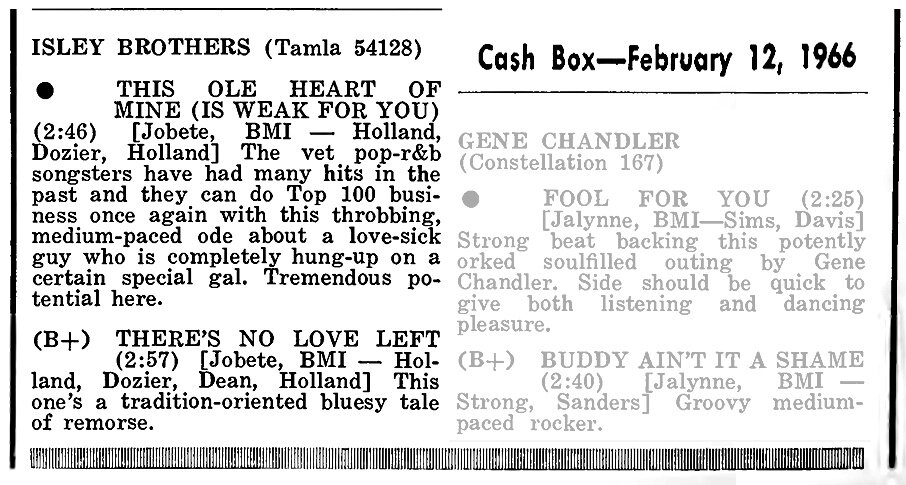
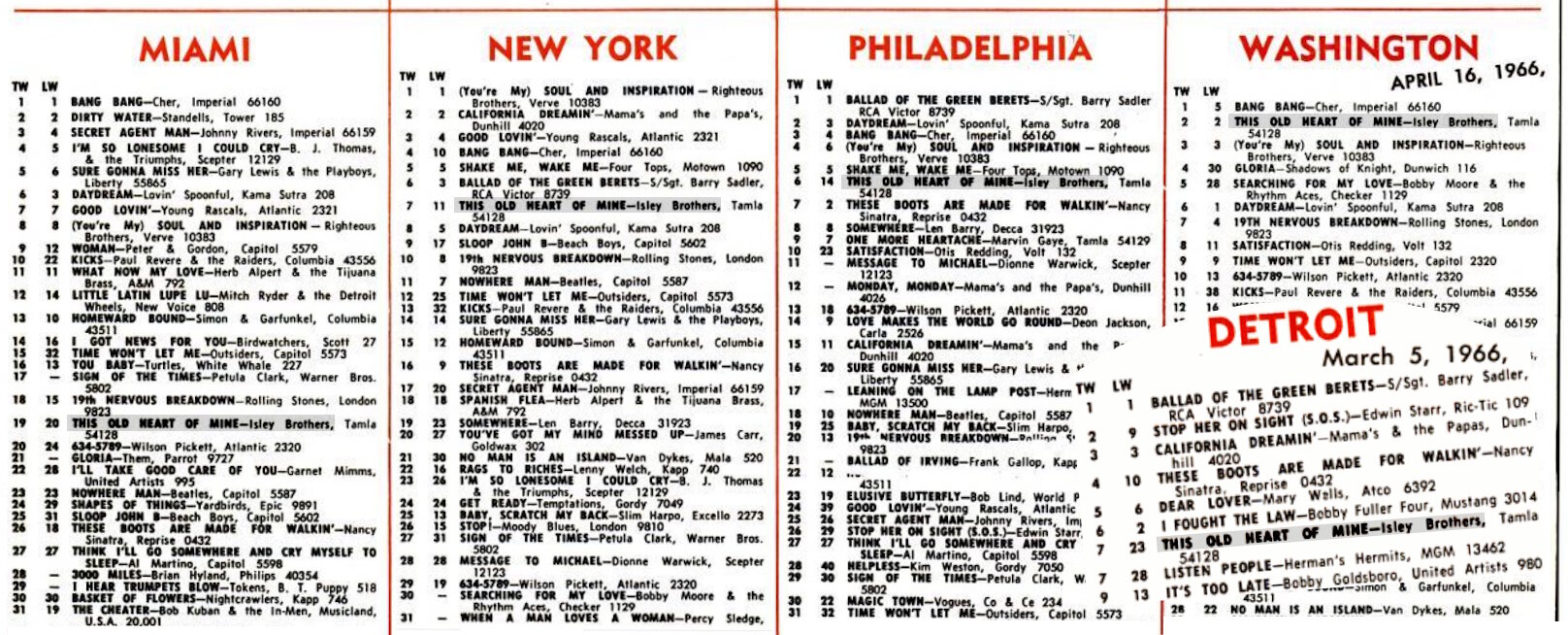
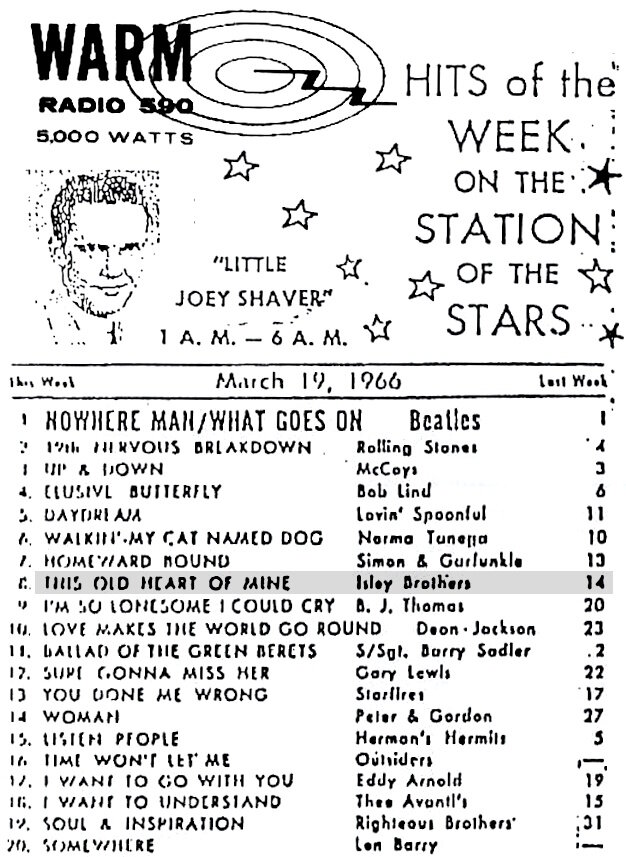
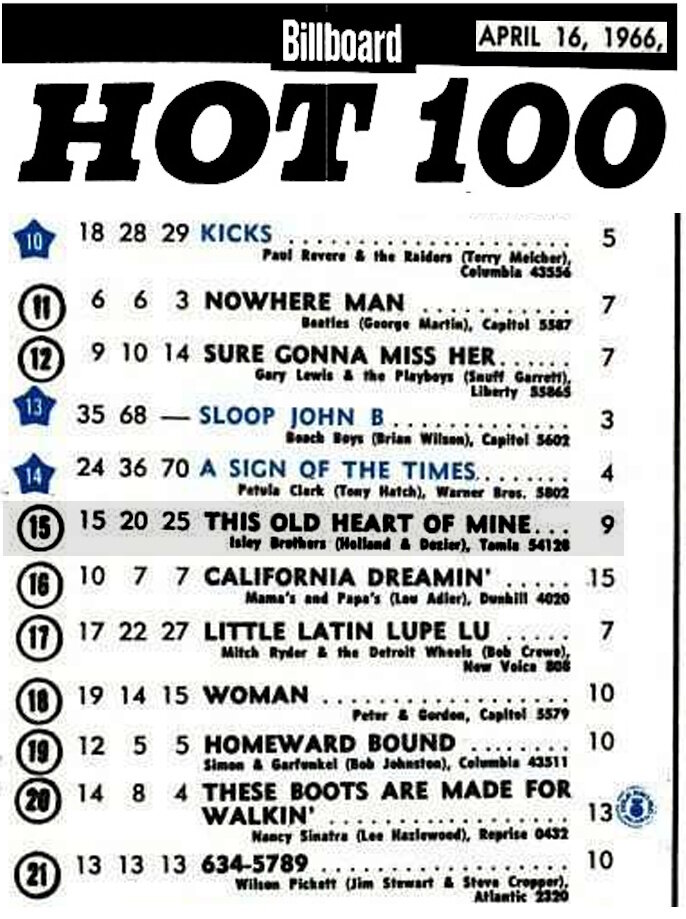
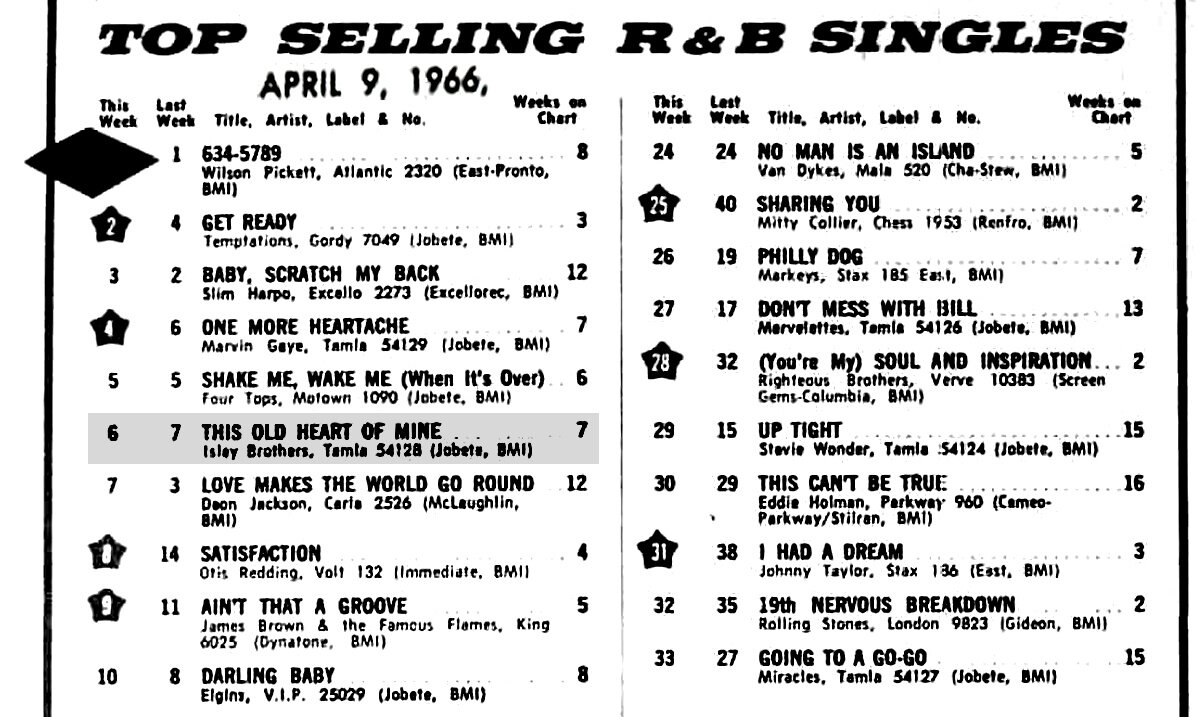
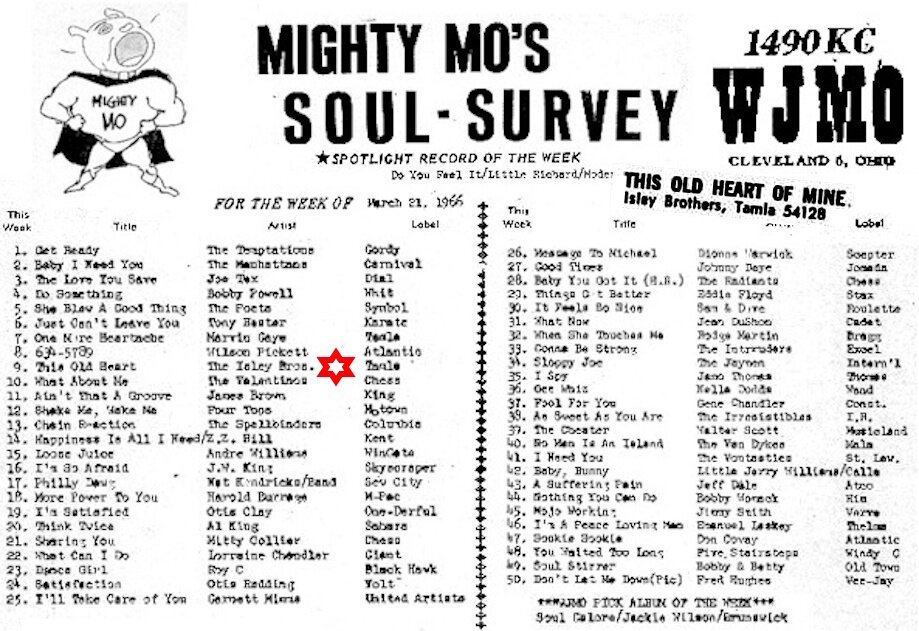
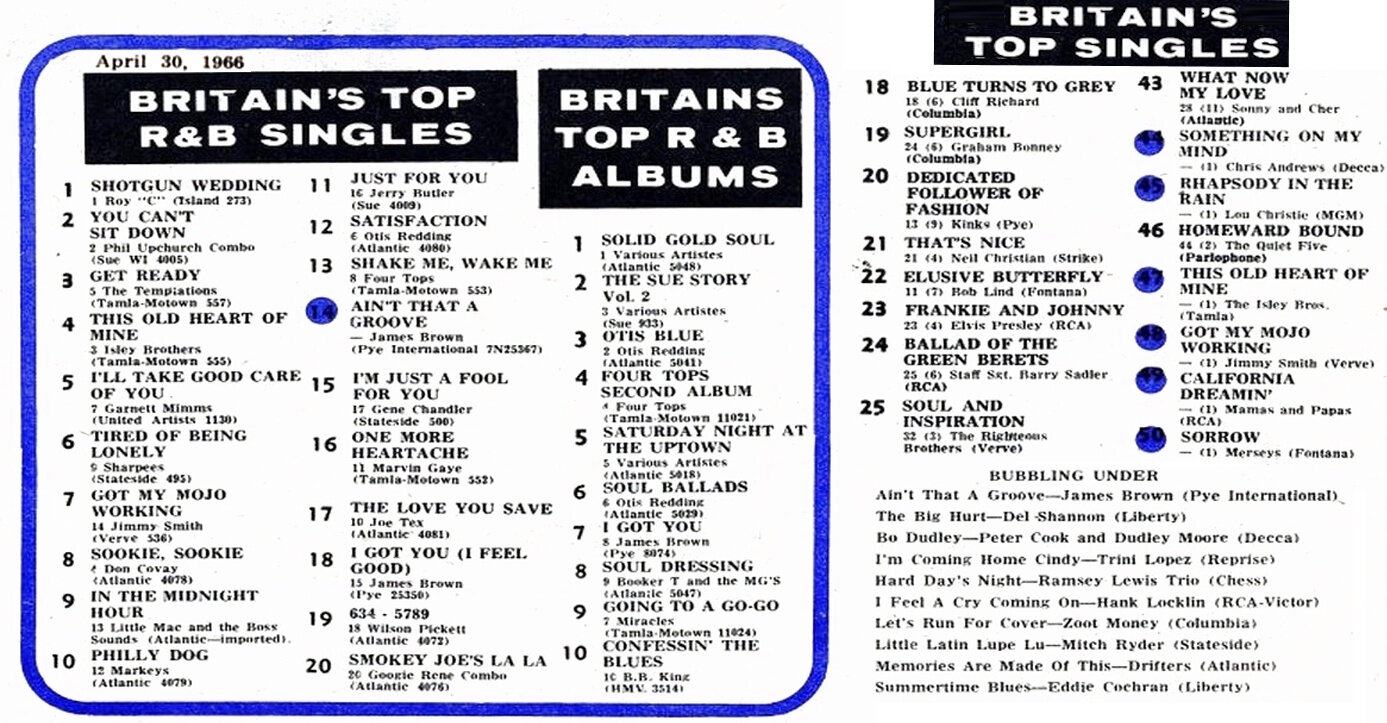

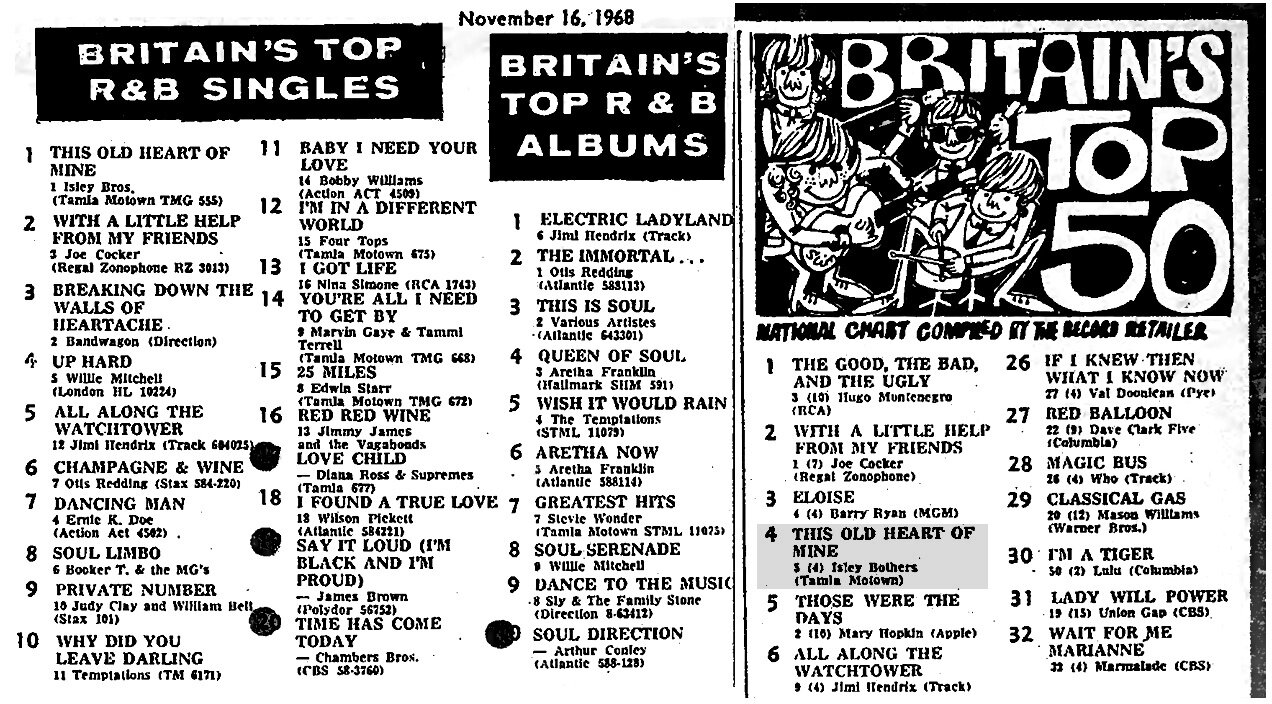
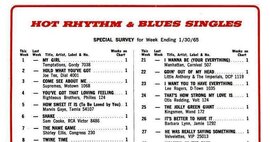



Recommended Comments
Get involved with Soul Source